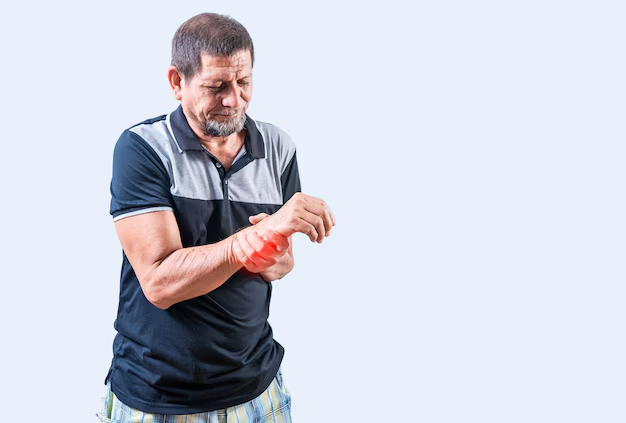Understanding Septic Arthritis: What You Need to Know
Septic arthritis may not be a term you hear every day, yet it demands attention due to its potential to cause joint damage and serious health implications. Whether you’re familiar with arthritis or just beginning to learn about joint health, this article offers an insightful exploration into septic arthritis and answers pressing questions you might have.
What is Septic Arthritis?
Septic arthritis is a severe infection in a joint, also known as infectious arthritis. It occurs when bacteria, viruses, or fungi invade the joint space, leading to inflammation. The most common culprits are bacteria such as Staphylococcus aureus, which can enter the joint through the bloodstream or as a result of direct contamination from an injury or surgery.
How Does it Differ From Other Forms of Arthritis?
While conditions such as osteoarthritis and rheumatoid arthritis are primarily characterized by inflammation due to wear and tear or autoimmune reactions, septic arthritis is specifically an infection-based inflammation. This distinction is crucial as the management of septic arthritis typically requires prompt antimicrobial intervention.
Symptoms to Look Out For
Timely recognition of septic arthritis symptoms is critical. Here are some key indicators:
- Pain and Swelling: Usually in a single joint, often the knee or hip.
- Redness and Warmth: The affected area may appear red and feel warm to the touch.
- Limited Movement: Joint stiffness or inability to bear weight.
- Fever and Chills: Systemic symptoms that suggest infection.
If you notice these signs, it is important to seek medical attention promptly.
Who is at Risk?
Certain groups are more susceptible to septic arthritis, including:
- Individuals with Preexisting Joint Problems: Conditions like rheumatoid arthritis can predispose individuals to joint infections.
- Recent Joint Surgery Patients: Procedures such as joint replacements carry a risk of infection.
- People with Weakened Immune Systems: Those with diabetes, kidney disease, or undergoing treatments that suppress immunity.
- Intravenous Drug Users: Increased risk due to potential contamination.
Understanding these risk factors can aid in early detection and prevention strategies.
Diagnosing Septic Arthritis
Doctors typically use a combination of clinical evaluation and diagnostic tests.
Tests Commonly Used Include:
- Joint Aspiration (Arthrocentesis): Extraction and analysis of synovial fluid from the joint for signs of infection.
- Blood Tests: To identify systemic infection or inflammation markers.
- Imaging: X-rays or MRIs can help assess joint damage or other abnormalities.
Treatment Options
Swift and appropriate treatment is vital to prevent serious joint damage.
Treatment Approaches:
- Antibiotics: Mainstay of treatment, tailored based on the identified microorganism.
- Joint Drainage: Repeated aspiration or surgical means to remove infectious debris.
- Rest and Physical Therapy: Resting the joint during acute infection, followed by rehabilitation exercises post-infection.
Ensuring compliance with treatment plans is essential for recovery.
Can Septic Arthritis Be Prevented?
While not all cases are preventable, some measures can help reduce risk:
- Promptly Treat Joint Injuries: Proper wound care can prevent infection.
- Maintain Control of Chronic Conditions: Diabetes and other conditions should be well-managed to lower infection risk.
- Follow Post-Surgical Care Instructions Carefully: Adhering to guidelines can prevent postoperative infections.
Tips for Joint Health 🦵
Keeping your joints healthy is crucial in managing and preventing various arthritis conditions. Consider the following tips:
- Stay Active: Regular exercise maintains joint function and decreases stiffness.
- Healthy Diet: Nutrient-rich foods support overall joint health.
- Hydrate Well: Proper hydration keeps the body's systems, including joints, functioning smoothly.
- Weight Management: Reducing strain on joints helps prevent deterioration.
Recap of Septic Arthritis Essentials 📝
To summarize, understanding and recognizing septic arthritis can lead to better outcomes. Here’s a quick checklist:
- 👀 Watch for Symptoms: Sudden joint pain, swelling, redness, warmth, and fever.
- 👪 Know the Risk Groups: Preexisting joint issues, weakened immunity, recent surgery.
- 🔍 Seek Prompt Diagnostic Evaluation: Joint aspiration, blood tests, and imaging.
- 💊 Treatment is Key: Antibiotics, joint drainage, rest, and physical therapy.
- 🛡 Preventive Measures: Injury care, chronic condition management, and post-surgical adherence.
Insight for the Reader
Septic arthritis underscores the importance of vigilance in joint health. Whether managing existing joint conditions or safeguarding against potential infections, being informed empowers you to take proactive steps for your health. If you suspect septic arthritis, seeking medical advice promptly is always the best course of action. In the journey of understanding arthritis, being well-informed equips you with the confidence to handle your health strategically.
By staying educated and proactive, you can navigate the challenges of septic arthritis with a balanced approach, ensuring the highest quality of life possible.

Related Topics
- Are Bananas Bad For Arthritis
- Are Tomatoes Bad For Arthritis
- Can An Inflamed Nerve Cause Arthritis
- Can An Inflamed Nerve Cause Arthritis In Dogs
- Can An x Ray Show Arthritis
- Can Arthritis Be Cured
- Can Arthritis Be Reversed
- Can Arthritis Become Septic After Infection From Injection
- Can Arthritis Cause Numbness
- Can Arthritis Cause Swelling